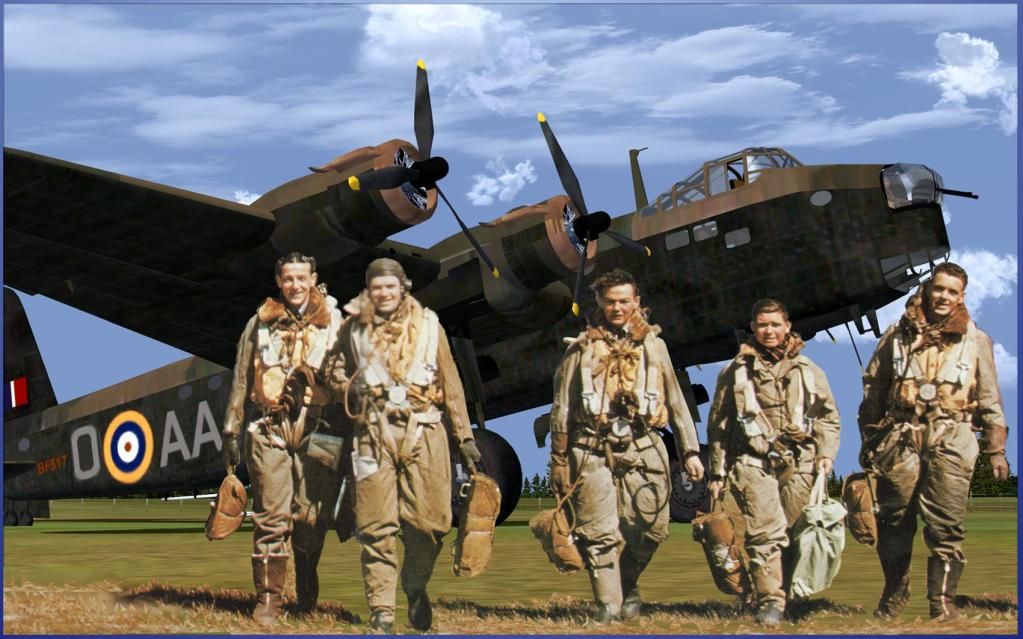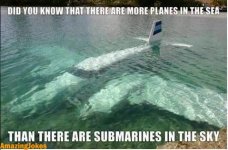Wow! I didn't know a Stirling was available for FSX. Going to download it if I can find it. Love that aeroplane!

Sadly in history the Stirling (S.29) is much maligned. The design did have many shortcomings, but they were a direct result of Air Ministry short sightedness and overregulation in drawing up the specs.
For example the limitation to 100ft wingspan (which so affected flight performance and limited the Stirling in operations to 12,000ft - a suicide height over Germany) was an Air Ministry stipulation - not the myth that it was the existing hanger size (which was actually 112ft). The limitation was aimed to force the designer to keep overall weight down. That same limitation was also applied to Handley Page Halifax and the Avro Manchester designs (both twin-engine designs at this stage - 1937).
Another Air Ministry restriction that affected Short's design was the stipulation that on take-off the aircraft needed to lift off from a 500ft runway and be able to clear 50ft trees at the end - something even small light aircraft would struggle with! Naturally the Stirling failed abysmally in this aspect. To improve the take-off run Short looked at increasing the angle of the wing to create greater lift on the take-off roll. Two options were open to Short. Do what Armstrong Whitworth did with the Whitley, which was to modify the angle of he wing itself, or simply increase the height of the landing gear and so increase the wing angle on take-off. The second option was implemented, giving the Stirling it's characteristic long-legged look. That decision led to many landing and take-off accidents.
One of the advantages of the thick wing of the Stirling was that it gave great grip in the air, granting the Stirling surprising manoeuvrability. In fact the Stirling could out-turn both the Halifax and the Lancaster; and some pilots claimed it could also out-turn the Messerschmitt Me 110 and the Junkers Ju 88 night fighters.
The disadvantage's of the short, thick wing were low operational height; and some vicious flying characteristics during takeoff and landings. Those bad characteristic were uncontrolled swings on take-off, and on flare-out for landing a tendency to suddenly stall out and drop like a stone onto the runway (both with disastrous results for the crews). With proper training and manipulation of throttles the first was overcome, as was the crucial monitoring of engine power and speed for the second. But throughout it's life the Stirling was always regarded as a handful for both take-off and landing, the same as it was regarded as a joy to fly once airborne.
In 1941, Short proposed a new variant, the S.36 which was nicknamed "The Super Stirling" in a company publication. This Stirling would feature a wing span of 135 ft 9 in and four Bristol Centaurus radials and a maximum takeoff weight of 104,000 lb (the Lancaster max take-off weight was 72,000 lb). The performance estimates included a 300 mph speed and a 4,000 mile range with a weapons load of 10,000 lb over 2,300 miles or 23,500 lb over 1,000 miles. The defensive armament of the S.36 was to be ten 0.50 calibre machine guns, in three turrets. It was initially accepted for testing under Specification B.8/41 (written to cover it) and two prototypes were ordered but Arthur Harris, as commander of Bomber Command, felt that production would be too slow and would be better used to give the existing design improved Hercules engines, for a higher ceiling (which is reality proved only marginal). Shorts were told in May 1942 that the Air Ministry would not be continuing the project and in August Shorts decided to terminate work.
The one aspect of the Stirling design that I haven't been able to determine is why the fuselage was so long. Anyone know??
 I have the pilots notes here ... looking at the engineers panel , one would think you on a submarine or a steam train of the 1930s .
I have the pilots notes here ... looking at the engineers panel , one would think you on a submarine or a steam train of the 1930s .

 :salute:
:salute:

 over to flightsim.com as suggested but could do with knowing this as it might save me some detective work.
over to flightsim.com as suggested but could do with knowing this as it might save me some detective work.


 , Wonder if Short Bros made Submarines !
, Wonder if Short Bros made Submarines ! 

